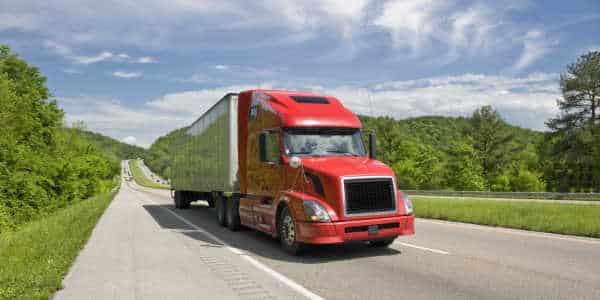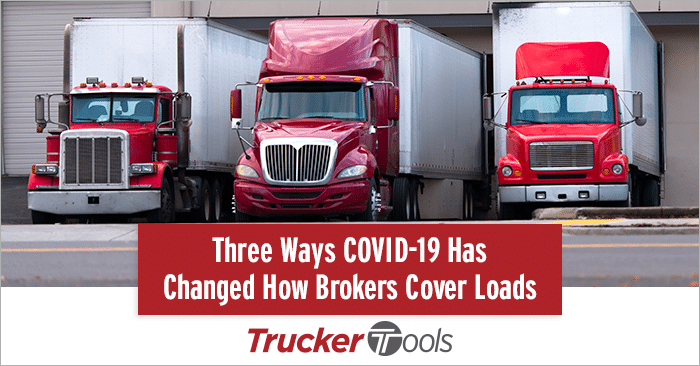In the early days of the COVID-19 pandemic, we all hoped that the lockdowns, masks, shortages and outbreaks would cease and that the world would soon go back to relative “normal.” A year and a half later, it seems that the pandemic isn’t going anywhere — and it continues to impact all of us personally and professionally in some way or another. One of the biggest changes we’ve seen in the freight brokerage industry is a fundamental shift in how brokers and 3PLs like you locate and secure capacity. Many in the industry have come to the realization that traditional approaches to capacity procurement that rely heavily on manual processes are no longer effective. The market volatility induced by the COVID-19 pandemic has fundamentally changed the industry’s approach to securing capacity and building carrier networks.
Read on to learn about the three ways COVID-19 has changed how brokers cover loads.
1. Accelerated Digitization Efforts
The first way that COVID-19 has changed how brokers cover loads is that it has greatly accelerated digitization efforts across the board, encompassing capacity sourcing, carrier management, real-time load tracking and more. As Aaron Huff, CCJ’s Senior Editor notes, “Most transportation and logistics companies had a digitalization strategy before the COVID-19 pandemic, but the implementation was moving at a snail’s pace.” Once the pandemic hit, most retailers had to move all of their sales to online channels or curb-side pick-up. Virus outbreaks shut down factories, ports and distribution centers, while consumer spending shifted to outdoor-related activities and home improvement-related products.
According to a report from McKinsey released in October of 2020, companies have in reaction to the pandemic accelerated the digitization of their customer and supply-chain interactions, and their internal operations by three to four years. The report found that most of the business executives surveyed expect these changes to be permanent. Freight brokers and 3PLs that hadn’t digitized their operations before the pandemic suddenly realized that they needed to embrace digitization to be able to keep up with huge swings in demand, the reshaping of freight lanes, changes to production and distribution networks, and capacity and labor shortages.
2. Automation of Capacity Sourcing with Digital Freight Matching
Within freight brokerage and 3PL, much of the recent digitization efforts over the last 16 months has centered on sourcing capacity digitally instead of or in addition to using manual methods, such as load boards, phone calls and emails. The primary technology leading the digitization of capacity sourcing is digital freight matching technology. Since the pandemic hit U.S. shores, the number of brokers and 3PLs interested in and implementing digital freight matching technology has soared. The reason why is simple: digital freight matching technology can connect freight brokers and 3PLs with carriers and their capacity faster and more efficiently, a major competitive advantage in this new landscape.
Digital freight matching technology allows freight brokers and 3PLs like you to tap into the “hidden capacity” that you may not find on load boards or get from cold calls to carriers. With digital freight matching technology like Trucker Tools’, you gain access to the hidden capacity of small carrier and owner operator capacity, as well as the ability to quickly search in real-time for both in-network and out-of-network capacity. Digital freight matching technology narrows your focus from every carrier that you know to carriers who are likely to have capacity. With digital freight matching technology, when you do pick up the phone to call a carrier, it’s to negotiate the rate, not to find out if the carrier will have trucks available on a specific date in a certain lane.

3. Using Technology To Build Carrier Networks
The third way that COVID-19 has changed how brokers cover loads concerns retaining carriers and building carrier networks. In the current market that heavily favors carriers, the technology that you use can differentiate you from your competitors. What many brokers and 3PLs have realized in recent months is that the convenience and efficiency gains of well-designed technology can be used as in incentive to keep carriers in-network. Using technology like digital freight matching to locate available capacity reduces the number of phone calls, emails, and load board messages that drivers and carriers have to deal with. With digital freight matching, you as the broker can target your phone calls and communications to only those carriers that are likely to have capacity in the lane when you need it. This is in contrast to sending blanket emails to every carrier you know or calling the same carrier dispatchers every day.
Technology like Trucker Tools’ Book It Now® can further entice carriers to continue doing business with your freight brokerage. As one of the largest 3PLs in the country, BlueGrace Logistics uses Book It Now® to offer drivers and carrier dispatchers a one-click digital load booking process. According to BlueGrace’s CEO of Transportation Mark Ford, a high percentage of the company’s Book It Now® transactions are happening outside of normal business hours and on weekends. The convenience and ease of use offered to carriers through Book It Now® encourages them to stay in-network with BlueGrace.
“Traditionally speaking, most brokers focused and relied on load boards and the transaction in general,” says Ford. “What technology allows us to do these days more so than in the past is to collect data and utilize that data, so we’re spending less time trying to figure out who to call and more time on building relationships…”
For more on how the pandemic has affected freight brokerage, view Has COVID-19 Triggered “Tomorrow” for Brokers?
Schedule a free demo of Trucker Tools’ digital freight matching platform, real-time visibility platform and Book It Now®.






